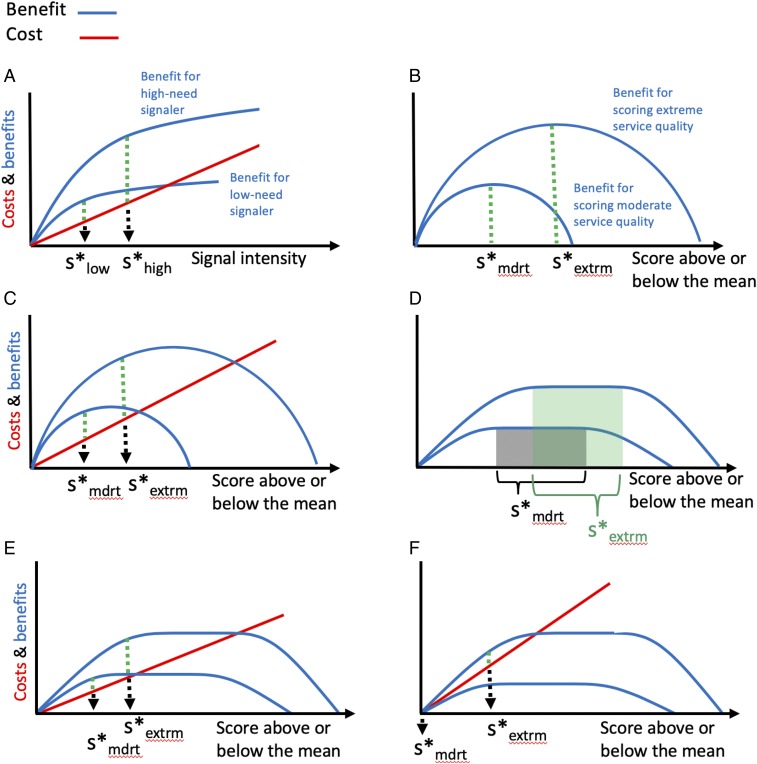Fig. 5.
A graphic model of costly signaling of need (following ref. 32) adapted to the case of costly scoring of service quality. (A) In the original model (31) the term “need” was derived from the notion that offspring in a great need benefit from receiving extra food more than satiated offspring and can therefore invest more in costly signaling. In a rating system, the differential benefit effect of signaling low and high need may be replaced with scoring two different levels of either low or high service quality satisfaction: moderate versus extreme (e.g., service perceived as 1 versus 2 SD below or above the mean). (B) When raters are motivated to signal reliably they perceive the benefit curves as decreasing beyond the point representing true service quality, forming different peaks, and thus different signaling optima for scoring moderate versus extreme service qualities (S*mdrt versus S*extrm, respectively). (C) Under the same conditions as in B, adding cost does not increase reliability (does not increase the distance between S*mdrt and S*extrm). (D) When perceived service quality is not clear, the benefit peaks are flattened and there is no single optimum, creating an overlap between the optimal scoring range of moderate and extreme service qualities, which reduces reliability. (E) Under the same conditions as in D, introducing signaling cost sets clear different optima for scoring moderate and extreme qualities. (F) When signaling cost exceeds the benefit for moderate scores, raters may only score extreme qualities and refrain from scoring moderate ones.

